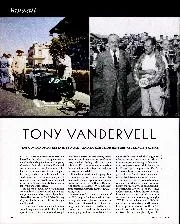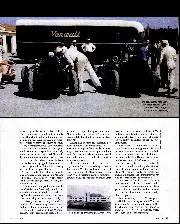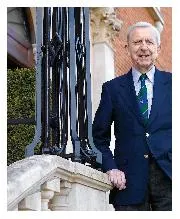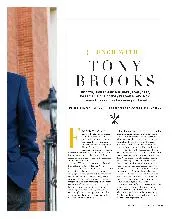Even at this distance Tony is still tickled by Jack Brabham’s accidental pitstop, when he parked his out-of-fuel Cooper in a garage forecourt (see page 76).
Although his race was brief, Tony looked forward to the prize-giving dinner, where there was a camaraderie he likens to pilots in WWII. “They were always fun, especially in Italy – drivers swapping tales, and any irritations from the race were sorted out there and then. No lengthy protests back then and I don’t remember any fisticuffs. Formula 1 today could learn from that, including Vettel. We didn’t used to drive into each other’s cars.”
Attractive as the seaside resort of Pescara was, there was no time to relax before heading off. “We used to have to work for our peanuts in those days,” he says. With his race effectively unrun, Brooks was able to expend some pent-up adrenaline on the trip back to Milan. “Jack Brabham wanted a lift so we employed the Aston strategy and left him the driving seat. He didn’t say much and drove rather slowly. Then we caught up with a long military convoy and he didn’t want to pass as it had a police motorbike stopping any overtaking. I got a bit frustrated as at this rate we’d never get to Milan before night. I told Jack I was going to take over – without stopping as there was a queue behind us. Roy in the front seat held the wheel while Jack climbed over the seatback and I slid behind the wheel.”

With team-mate Stirling Moss, who would go on to win the race
Grand Prix Photo
A Hillman Minx four-up is hardly a performance car, but when a gap appeared Brooks set off past policeman and 20 army lorries. “The policeman looked astonished,” he laughs, “and then set off in pursuit. I had to dive into a couple of gaps to avoid oncoming traffic, but I’d forgotten there was a police rider at the front. He was even more astonished as we went past.”
But the first policeman was on his tail, and finally Brooks had his race, using all the road and every rev the little Hillman could deliver. “The road was empty but a Minx four-up couldn’t leave a motorbike behind so I was glad when rain began. And then we saw a level crossing with the barrier just starting to come down so I aimed for the gap, put my foot down and made it with a couple of feet to spare.”
It’s hard to imagine the restrained, gentlemanly Brooks in this Indiana Jones mode, but he’s still laughing about today – even though he recalls that his passengers all went quiet. Their pursuer caught them at the next level crossing, though, where they had to stop and Tony wound down his window and rested his head. “The rider must have been accumulating saliva for miles because he pulled alongside and spat expertly at me. What I didn’t know was that Roy had given him the V-sign and he thought it was me!”

A Hillman Minx similar to that used in the Brooks police chase
Getty Images
“I know it doesn’t sound like Brooks,” he goes on, “and sadly Roy isn’t here to confirm it, but Pina can. No word of exaggeration! I certainly got rid of my frustrations about the race.”
Honour satisfied, the carabiniere returned to his station and Brooks drove on calmly to Milan, adrenaline overload expended. “People will have a totally different view of me if you print that!” he says.
Picture perfect
The artist Tim Layzell reveals how he created this month’s stunning cover image

There has always been one surefire way to tell if you have made it as an artist: people start copying you. It is a truth ruefully acknowledged by Tim Layzell, the man who created this month’s cover image.
“I suppose I have a distinctive style,” he says. “And I have noticed that some people are trying to copy it now, which is annoying, but I still love doing it.”
Over the past two decades since winning a competition at the age of 13, Layzell has carved out a name for himself as one of the world’s foremost painters of motor racing. His pop-art style has been imitated but never matched and to many it is perfectly suited to capturing the drama and movement of the sport.







